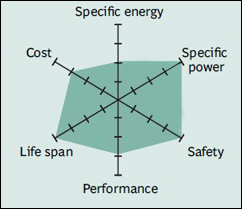Confirmed: MIC Tesla Model 3 Will Have Prismatic LFP Cells
It look Tesla is going to lifepo4 prismatic cells for the M3 in China.
It look Tesla is going to lifepo4 prismatic cells for the M3 in China.
You can install our site as a web app on your iOS device by utilizing the Add to Home Screen feature in Safari. Please see this thread for more details on this.
Note: This feature may not be available in some browsers.

.jpg)
Confirmed: MIC Tesla Model 3 Will Have Prismatic LFP Cells
It look Tesla is going to lifepo4 prismatic cells for the M3 in China.
Now its the same as legacy using prismatic cells, how can Tesla claim battery superiority now?
1) Cooling is worse
2) Battery pack puffing up can damage adjacent cells
Is this just a pure cost reduction game now?
Now its the same as legacy using prismatic cells, how can Tesla claim battery superiority now?
1) Cooling is worse
2) Battery pack puffing up can damage adjacent cells
Is this just a pure cost reduction game now?
Thinking about it, LiFePO4 EV batteries are common in China, don't depend on nickel supply and don't catch on fire.It's not just cost reduction - it's also about production volumes too. These manufacturers only have certain techniques available to them and if they have spare capacity in prismatic -- Tesla can at least build and sell cars if they have capacity ..
It's not just cost reduction - it's also about production volumes too. These manufacturers only have certain techniques available to them and if they have spare capacity in prismatic -- Tesla can at least build and sell cars if they have capacity ..


